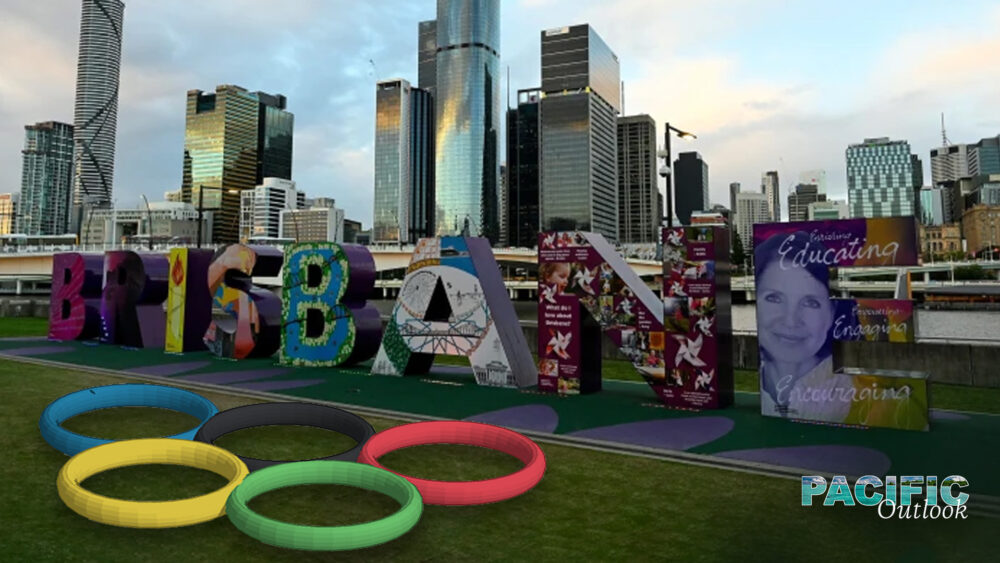With the hefty price tag of hosting an Olympic and Paralympic Games, and the fear of creating ‘white elephant’ venues that long sit dormant after use, the International Olympic Committee (IOC) has adopted a ‘new norm’ approach for the Brisbane 2032 Games.
This plan, the IOC notes, “will provide cities with increased flexibility in designing the Games to meet long-term development goals” and “invites opportunities to reduce venue sizes, rethink transport options, optimise existing infrastructure and reuse the field of play for various sports.”
While the Games will continue to carry a significant overall cost, the ‘new norm’ is an instructive concept, especially for the region’s Pacific Games, which are held every four years and have provoked similar concerns around expenditure and venue sustainability. Tonga, for example, opted to not host the 2019 Pacific Games, “claiming it could not afford to stage the event”. Then-Tongan Prime Minister ʻAkilisi Pōhiva, when pulling out of hosting duties in 2017, said hosting the Pacific Games would be a “costly mistake”.
Venue sustainability and Beijing’s regional ‘stadium diplomacy’ have also raised concerns, exposing examples where Chinese-built facilities for the Pacific Games have not stood the test of time. In 2006, for example, the Chinese Government built a $US 12.6 million aquatic centre to aid Samoa’s preparation, only for it to fall apart because the nation lacked any appropriate expertise to keep the facility operational. Having also worked at a similar sporting facility in Suva, Fiji, I have seen firsthand not only the limited durability of construction materials used, but also the prevalence of maintenance parts being exclusively Chinese sourced, and with maintenance manuals – incredibly difficult to find – also being written only in Chinese.
Beijing, however, has ‘gone large’ for the 2023 Pacific Games in Honiara, constructing the main sports stadium, aquatic centre, tennis centre, food and beverage facilities, a multifunction hall and a hockey field and training field. This will only add further questions to ongoing maintenance issues and the need for ‘new norm’ thinking to be introduced as part of future Pacific Games.
In starting to think about this, the new norm concepts themselves are practical and transferable to other large-scale events. The IOC’s ‘revised requirements’, for example, re-examine athlete village models, including size and layout, while also combining and optimising existing public transport uses, and sharing venues across multiple disciplines, “decreasing requirements on how many facilities a city would need to construct”.
It is not clear if any of this type of thinking was applied to Honiara. Much of the focus by the Sogavare Government – like most governments – has celebrated ribbon cutting, but not maintenance. Here the World Bank has warned that, combined with the Solomons’ externally funded road, airport, health and renewable energy infrastructure, the Pacific Games “will add annual maintenance costs of around SBD388 million (USD47.57 million). These pressures need to be carefully considered and planned for because we know that for every $1 invested in maintenance, $5 is saved on replacement costs.” While large-scale infrastructure projects do factor in maintenance, and may even earmark appropriate resourcing within a specific timeframe, as the sporting examples further above show, it is relevant expertise that remains a key missing link in the ongoing facility and infrastructure sustainability.
In addition to thinking about the revised new norm requirements, and how these can be applied in future Pacific Games host cities, there will need to be clear alignment between the demand, prioritisation and sequencing of projects in Pacific states and the Games. It is clear that, like the pre ‘new norm’ days of previous Olympiads, most Pacific Games still start with rigid sports requirements and work ‘top down’ as a starting point, rather than first asking what is needed and how the gap between the Pacific Games and other non-Games infrastructure requirements can be brought together.
Three further considerations will be important. The first is a ‘challenge’ mindset, where it may be worth considering how to conduct a future Pacific Games without building any new infrastructure. This is being attempted for the Los Angeles Games in 2028.
The second is a sustainability mindset, where Pacific Games host cities think not only about ‘reduce, reuse, recycle’ but even standing up temporary venues. As Associate Professor Judith Mair notes, this temporary infrastructure “can be dismantled after the event, or temporarily adapt[ing] existing venues. This will keep the costs of building new venues to a minimum.”
A third consideration, and one that can be implemented now, is getting Pacific Games organisers into the Brisbane 2032 tent, where knowledge and information exchange can begin to commence. While the scale is entirely different, the learnings will be important. The 2032 Games, after all, have been billed as a Games for ‘the entire region’. And future Pacific Games that represent not only value for money but much-needed and genuine legacy outcomes for Pacific citizens will be an important opportunity to seize.
Sean Jacobs is a Papua New Guinean-born Brisbane-based writer, government relations and public policy specialist.








